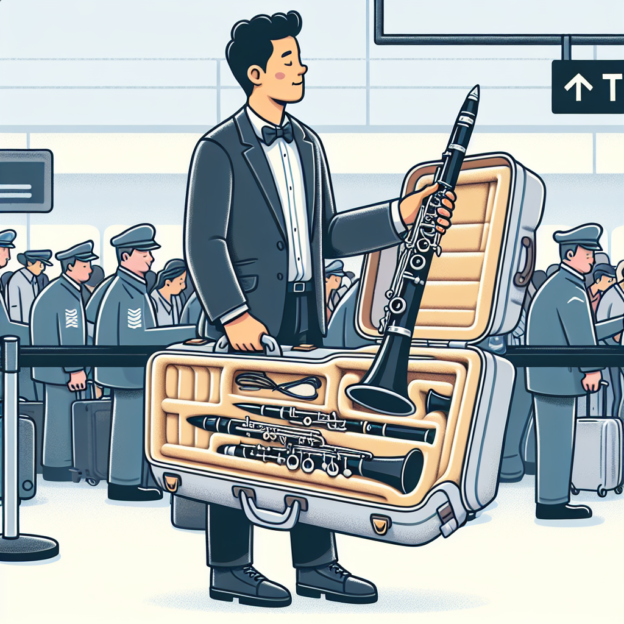Traveling with Your Clarinet: TSA Compliance Guide
Traveling with your clarinet? You know that feeling of packing up your beloved instrument, hoping it arrives safe and sound? One of the main concerns for any clarinetist on the go is TSA compliance. Understanding the guidelines that the Transportation Security Administration (TSA) has in place is important so you can keep your clarinet safe while ensuring a smooth experience at security checkpoints.
Let's discuss what TSA compliance means for your clarinet case. It's about the rules that govern how you transport your instrument when flying. Not all clarinet cases are the same. Some cases are made with strong materials that can handle air travel, while others might not protect your clarinet as well. When buying a clarinet case, make sure to choose one that meets the TSA's standards for carry-on instruments.
TSA Recommendations for Musical Instruments
The TSA typically suggests that musical instruments, including clarinets, be treated as carry-on luggage. This means you can take your clarinet on the plane with you, instead of checking it. This is great news, as it lowers the chance of damage during handling. But remember to check your case's size against your airline's rules to make sure it fits in the overhead compartment.
| Aspect | TSA Recommendation |
|---|---|
| Carrying Method | Carry-on preferred |
| Case Type | Sturdy, TSA-compliant |
| Size Restrictions | Must fit airline overhead compartment |
| Accessories | Securely stored in designated compartments |
Key Features of a TSA-Compliant Clarinet Case
A standout feature to look for in a clarinet case is padded support. High-quality cases, such as those made by Martin Freres, often have specially designed compartments that keep each piece firmly in place. This reduces movement during travel and protects against bumps and shocks. When TSA staff see a well-organized case, it can speed up the inspection process as they can quickly check the contents.
Here's another tip: Keep your mouthpiece, reed, and other small accessories easy to reach but safely stored in their designated spots. While these items shouldn't cause any issues, having them neatly organized can make your security line experience go more smoothly.
Packing Your Clarinet Accessories
Don't forget to pack your clarinet accessories wisely! Think about bringing an extra reed or two in your carry-on. You never know when your reed might act up right before a performance or practice session. Just make sure they're in an airtight container to keep them fresh and ready to use.
Navigating Airport Security with Your Clarinet
Going through busy airport security lines can be stressful. Here are some tips for handling your clarinet case at security:
- Prepare for Security: Take your clarinet out of its case if asked. Usually, the TSA will want to look at the instrument itself, so having it easy to access is a good idea.
- Be Patient: The TSA staff knows how to handle musical instruments, but sometimes things take longer. Feel free to politely explain that your clarinet is delicate and needs careful handling during the inspection.
- Show Off Your Case: If your clarinet case has any TSA compliance labels or markings, make sure they're visible. This can help the staff recognize what it is and speed up the security process.
Airline Policies for Musical Instruments
In recent years, some airlines have improved their policies for musicians traveling with instruments. However, there are still differences between airlines. While most let you bring your clarinet as a carry-on, it's a good idea to call ahead and check the details. Airline rules can change quickly, and you don't want to be surprised with an instrument that can't come with you in the cabin.
Caring for Your Clarinet After Security
Lastly, remember to look after your clarinet once you've gone through security. Traveling can be tough, and it's easy to forget. Make it a habit to check your case and make sure your instrument is safe during layovers. A little care can go a long way in keeping your clarinet in great playing condition.
Final Thoughts
As musicians, our instruments are part of who we are, and making sure they're safe during travel is really important. So, whether you're just starting out or you've been playing for years, keep these tips in mind — and enjoy your travels with your clarinet!
Table of Contents
- Traveling with Your Clarinet: TSA Compliance Guide
- TSA Recommendations for Musical Instruments
- Key Features of a TSA-Compliant Clarinet Case
- Packing Your Clarinet Accessories
- Navigating Airport Security with Your Clarinet
- Airline Policies for Musical Instruments
- Caring for Your Clarinet After Security
- Final Thoughts







